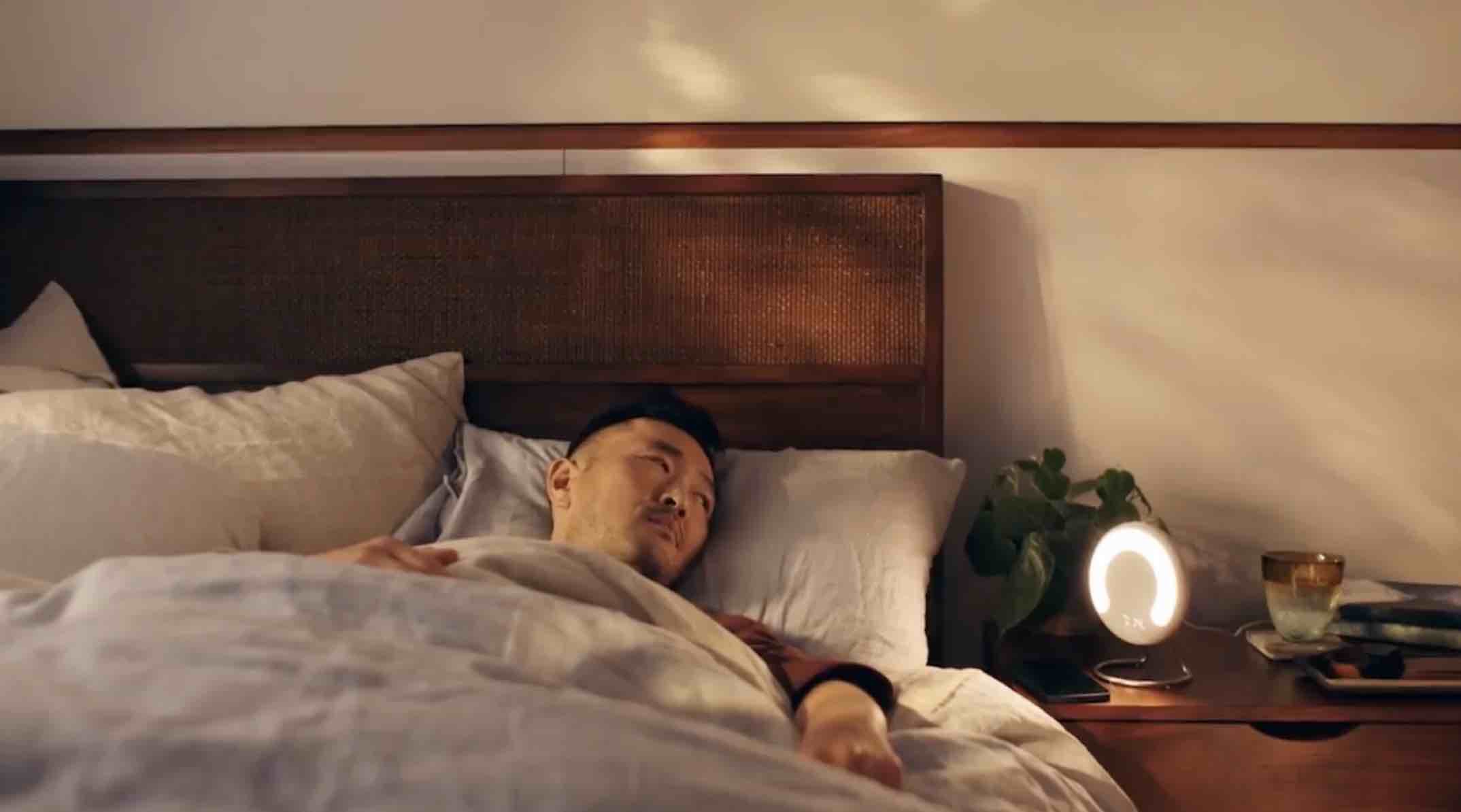Exactly a year ago today, Amazon announced its entry into the fitness tracking space, with the launch of the Halo View. The wearable was certainly priced right at $80, with a design that appeared to take cues from some Fitbit offerings. Ultimately, however, the product received the wrong kind of press, over the matter of data the company was collecting.
At today’s big virtual event, Amazon added a new product to the line. The Halo Rise is a sleep tracker, though it swaps the whole wearable thing for a design that sits on a bedside table. It’s not dissimilar from Google’s most recent Nest Hub in that respect — though the $129 Rise is very much purpose built.
“Prioritizing sleep isn’t just about getting more sleep. It’s about finding the right balance between great sleep and the habits and activities you do during the day,” Amazon’s Njenga Kariuki said during today’s event. “We call this ‘sleep-life harmony,’ and we strive to invent devices and services that remove the obstacles that disrupt this balance.”

Image Credits: Amazon
The system uses contactless sensors to detect sleep quality and states, coupled with movements and breathing patterns. The device offers a graph of Rem, light and deep sleep, coupled with additional information like ambient room temperature, humidity and light to determine how they impact sleep quality. The company explains:
It uses a sleep algorithm that has been trained and validated against overnight polysomnography—the clinical gold standard for sleep analysis. Halo Rise harnesses powerful ambient technology that’s always ready, automatically starting your sleep session when you get into bed with no buttons to press or batteries to charge.
I will say, there’s something to a non-wearable sleep tracker. I’ve found a majority of smartwatches uncomfortable to wear to bed. It’s like the observer effect for wearables, where tracking sleep changes it. I’ve had the most luck with under mattress trackers like the one produced by Withings, but the side of the bed is the next best thing. Amazon’s also quick to point out that the system doesn’t have cameras or microphones on-board — an important detail for something that, quite literally, watches you sleep.
In addition to the tracking, the system also has an alarm, coupled with a wakeup light that simulates sunrise via 400 LED, paired with a speaker. It’s tied to your sleep stages, so it doesn’t suddenly jolt you out of a deep sleep. There’s additional smarthome functionality on board, as well. Amazon again:
Halo Rise works even better with Alexa, making it easier to check your sleep insights and personalize your sleep experience. For example, use a compatible Echo device to ask Alexa how you slept, sync Alexa with the Halo Rise smart alarm to be woken up by your favorite song, or combine Halo Rise with other smart lights that can be controlled using just your voice. You also have the ability to use Halo Rise as part of a personalized Alexa Routine. For instance, when you get into bed, Alexa can automatically dim the lights in the bedroom, turn off the TV, and start a relaxing meditation. Additionally, you can ask Alexa to pull up your sleep data on Echo Show, with the last night’s sleep report viewable on the device’s display.
The system will run $140 when it starts shipping later this year. That includes six months of Amazon’s premium Halo service.
Amazon’s latest Halo device is a bedside sleep tracker by Brian Heater originally published on TechCrunch





